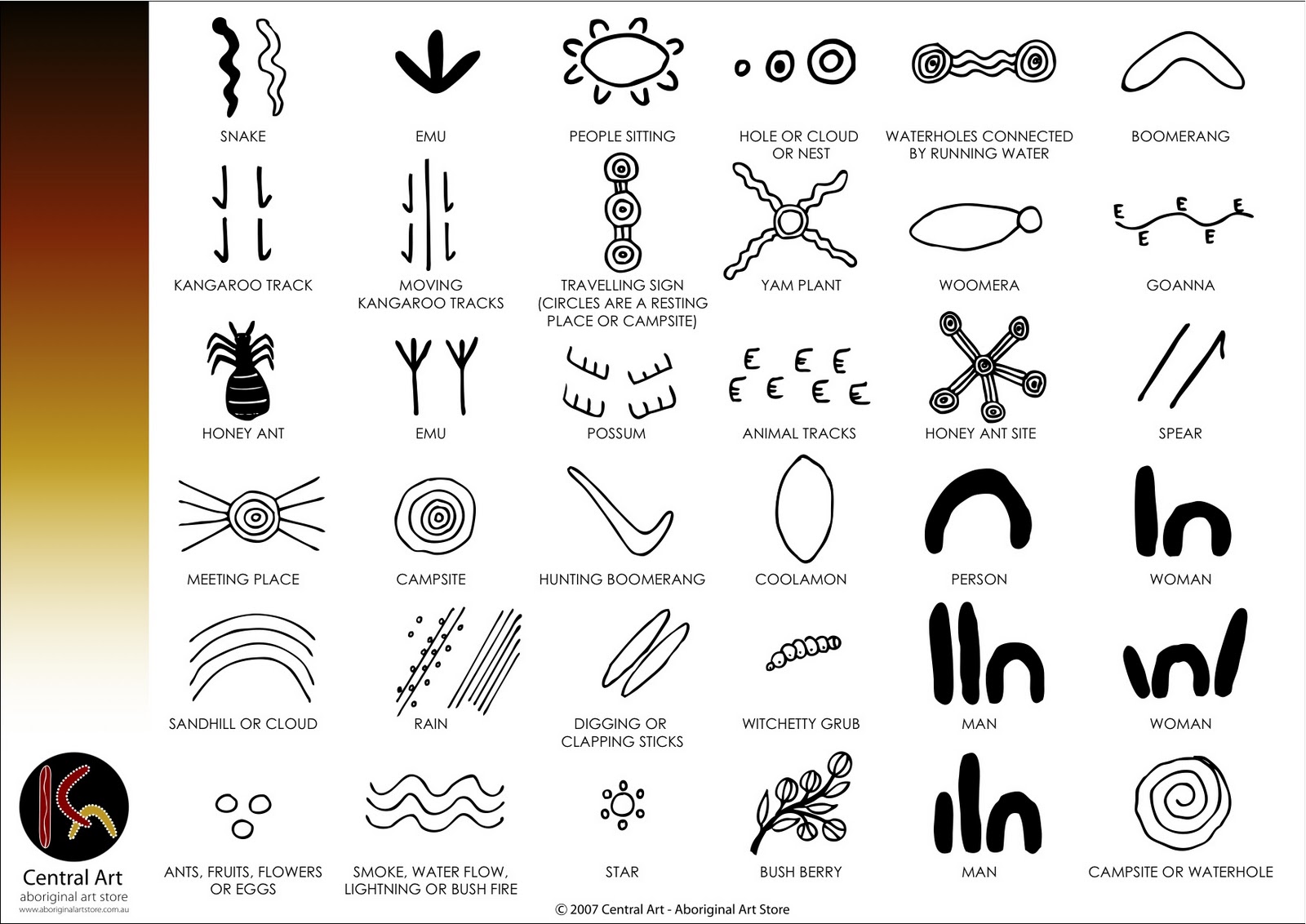
( drutska / adobe stock) popular symbols and their meanings. These works were almost always ceremonial or religious.

Symbols have different meanings depending on which design is being painted.
Aboriginal art symbols and their meanings. Some of the common aboriginal symbols and their meanings. Aboriginal art is produced using a diversity of tools, materials and symbols. To delve further on the subject of symbols and their prominence in aboriginal art, let’s take a quick look at some of the most commonly used ones with their meanings for a deeper comprehension regarding their use:
Symbols are used as the elements of an artwork to tell a story or share knowledge. Symbols were used in order to show the presence of different things or objects that existed around. A concentric circle on one design may mean waterhole.
These symbols were used as a means of communication; Aboriginal people used symbols to indicate a sacred site, the location of a waterhole and the means to get there, a place where animals. These symbols are used to represent ideas, places or meanings (vize, 2011) and communicated to others through art.
Aboriginal art symbols person man woman people sitting campsite / waterhole resting place connected waterholes water / smoke / fire human footprint possum footprint emu. They are also used to depict various stories and traditions. The symbols in aboriginal art are design specific.
Usually about 35 to 45 centimetres long. Aboriginal symbols are an essential part of a long artistic tradition in australian aboriginal art and remain the visual form to retain and record significant information. The people of the australian deserts traditionally expressed their art with sand drawings, painting their bodies, and the more enduring rock paintings and engravings.
The curved u shape is a widely used icon in aboriginal art and symbolises a person. Indigenous art is centered on story telling. Australian aboriginal art symbol boomerang boomerangs are throwing sticks which come in a wide variety of shapes.
Aboriginal symbols and their meanings. There is no written language for australian aboriginal people so in order to convey their important cultural stories through the generations it is portrayed by symbols/icons through their artwork. Their combination and context are the key to.
Aboriginal art symbols and meaning infographic explaining the different symbols used in aboriginal paintings and their meanings. Aboriginal art consists of symbols. Here at artlandish we have a wide variety of paintings that use contemporary and customary icons.
The sinews are used in hand crafting of tools and weapons. In the same way as many of us think of the colour red to symbols danger and green to symbols safety, grey as gloom and bright sequence of rainbow colours to symbolise happiness,. Communication of their lives on earth, their rituals, food, customs and also to show constellations and for ritual decorations.
Various symbols are used by aboriginal people in their art to preserve their culture and tradition. So too aboriginal artists use colours and colour sequences to convey meaning. Water, rain, snake or rainbow 7.
Aboriginal symbols and meanings 1. Symbols are used by aboriginal people in their art to preserve their culture and tradition. Symbols have different meanings depending on which design is being painted.
Artists use thin lines and hatching patterns. They are also used to depict various stories and are still used today in contemporary aboriginal art. Within their art, aboriginal artists employ a basic set of symbols, such as dots, concentric circles and curved and straight lines (jinttart, 2006.
From information collected over the past 100 years from across the continent (after layton 1992) the painting experience The marks that are placed either side of the human symbol can define whether it represents a male or female. She was forbidden to him as a wife but they still became lovers.
They are mostly used in combination with one another to express more complex information and ideas. ( drutska / adobe stock) popular symbols and their meanings. Returning v shaped boomerang is designed to return to the thrower.
Traditional art from northern australia has a distinctive style. The same concentric circle design mean a camp place in another. Various meanings ascribed to circular forms in aboriginal australian art by aboriginal informants.
A boriginal symbols are a visual language that communicates information about the cultural life of indigenous australians. A very important aspect of this art is the use of symbols. The aboriginal people have for thousands of years used artistic designs and symbols to convey stories and messages which are incredibly important in their culture.
Symbols are traditionally used as an important part of contemporary aboriginal art. Boomerangs come in three types: It is imperative to pass on information to preserve their culture.
Aboriginal art symbols are not like letters or hieroglyphics. These symbols have the power to transform any object into a sacred one. Aboriginal symbols and meanings diana pham, multi modal 2.
In men�s ceremonies the emu feathers are used for body decoration. It represents the shape that is left on the sand when a person sits cross legged. These works were almost always ceremonial or religious.
The hatchings communicate the clan, kinship (skin) and country of the artist. As you can see there are a lot of symbols in this painting such as honey ants nest, footprints, a women, ceremonial belt, a windbreak and a camp site. The story in this painting is of a man who fell in love with a women from the napangardi group.
At this level, there is no real meaning of the aboriginal art, just materials, lines, surfaces, colours and composition. Evidence of australian aboriginal art can be found since 30,000 years ago! This symbols depicted in aboriginal artworks represents emu tracks.
Aboriginals expressed their art with natural materials such as rocks, sand, wood, bark, beeswax, reeds and occasionally bodily fluids. These ancient symbols can be seen in their rock paintings, cave paintings, body paint, ceremonial clothing, and sand painting.